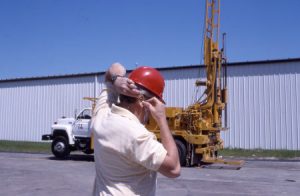 Noise is unwanted sound that can affect job performance, safety, and your health. Psychological effects of noise include annoyance and disruption of concentration. Physical effects include loss of hearing, pain, nausea, and interference with communications when the exposure is severe.
Noise is unwanted sound that can affect job performance, safety, and your health. Psychological effects of noise include annoyance and disruption of concentration. Physical effects include loss of hearing, pain, nausea, and interference with communications when the exposure is severe.
The critical sound level when hearing protection should be worn is 85 decibels (dBA), established for an 8-hour time weighted average. The louder and longer your exposure, whether at work, at home, or during recreation, the more likely your hearing will be damaged.
Here’s how to protect your hearing:
- Reduce the noise reaching your ears. Nothing can totally block sound, but some hearing protection devices block out part of the noise.
- Earmuffs, filled with liquid or foam, come in various styles for function and comfort. Earmuffs are fitted with a headband made of metal or plastic. Some headbands can be folded or put around the front or back of the neck in various positions. Cooling pads are even available for earmuffs worn in hot work environments.
- Earplugs can be pre-molded to fit all wearers or custom molded to fit exactly. They can be made expandable or non-expandable and may be either reusable or disposable. Earplugs are available on cords you can wear around your neck, so you can take earplugs out and put them in easily.
- Ensure your hearing protection is comfortable, fits properly and is compatible with other personal protective equipment (PPE) such as a hardhat.
- Cooperate with your workplace’s hearing protection program. Take the regular hearing tests and wear recommended personal protective equipment. Take good care of your PPE by cleaning it according to the manufacturer’s recommendations and replacing it as needed.
HEAR TODAY, GONE TOMORROW…USE HEARING PROTECTION!
Download flyer: STOTW_601_Hearing Protection Download Spanish flyer: STOTW_601_Hearing Protection_esp

